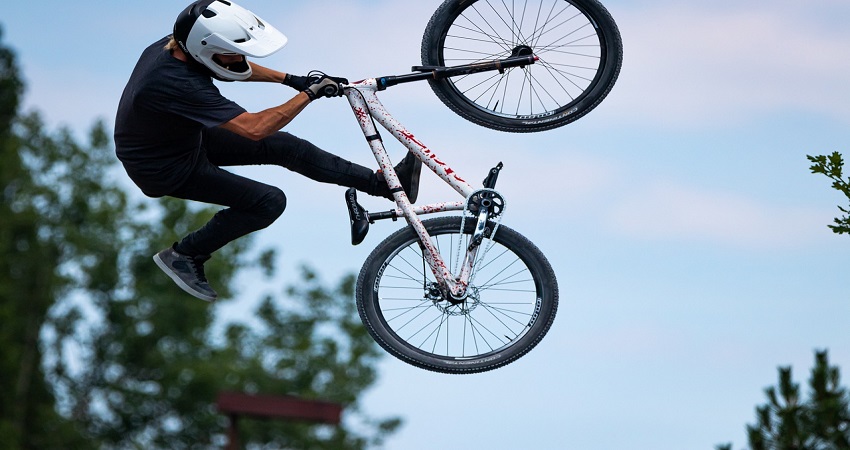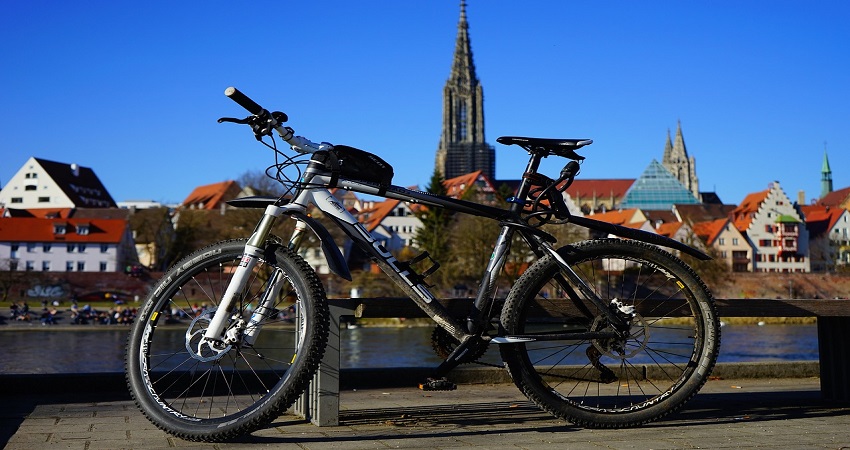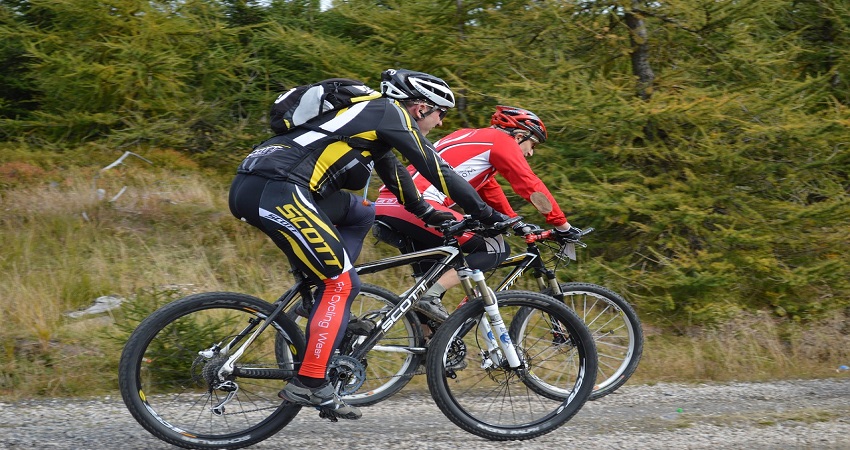The most popular type of mountain biking is cross-country mountain biking, known for its endurance races and varied terrains. It involves riding on unpaved trails and often includes steep climbs and descents.
Cross-country mountain biking is the most popular type, known for its challenging terrains and endurance races. It typically involves riding on unpaved trails, incorporating steep climbs and descents, making it appealing for enthusiasts seeking a physical and technical challenge. With a focus on speed and agility, cross-country biking offers an exhilarating experience for riders navigating through diverse landscapes.
As the preferred choice for many mountain bikers, cross-country biking continues to draw enthusiasts to explore and push their limits in the great outdoors. With its combination of physical and technical elements, it remains a top choice in the world of mountain biking.
Types Of Mountain Biking
Mountain biking is an exhilarating outdoor activity that offers a range of experiences and challenges, catering to diverse preferences and skill levels. Whether you are seeking heart-pounding descents or endurance-testing climbs, the world of mountain biking has something for everyone. Let’s explore the different types of mountain biking and their unique characteristics:
Cross Country
Cross-country (XC) mountain biking involves riding on a variety of terrains, including smooth trails and challenging ascents. Riders focus on endurance and speed, often navigating through wooded areas and fields. XC bikes are designed to be lightweight and efficient for long rides. They typically feature front suspension and have a predominantly upright riding position.
Downhill
Downhill mountain biking is an adrenaline-fueled discipline that centers on steep descents and technical, fast-paced trails. Riders require a downhill-specific bike with significant suspension travel, robust frame construction, and advanced braking systems. This type of mountain biking demands a high level of skill and focus, as riders tackle obstacles such as rock gardens, jumps, and drops.
Enduro
Enduro mountain biking combines elements of cross-country and downhill riding, featuring timed downhill stages and untimed uphill or transfer stages. Enduro bikes typically have full suspension with ample travel, designed to handle both climbs and aggressive descents. This discipline emphasizes all-around skills, endurance, and adaptability.
Freeride
Freeride mountain biking emphasizes creativity and technical prowess, with riders seeking out natural or man-made features to perform stunts, jumps, and other daring maneuvers. Freeride bikes are typically heavy-duty and equipped with ample suspension travel, allowing riders to tackle challenging terrain and execute gravity-defying tricks.
All-mountain
All-mountain riding encompasses a versatile approach, blending elements of various mountain biking disciplines. Riders tackle a wide range of trails and terrain, showcasing a mix of climbing, descending, and technical riding skills. All-mountain bikes are designed to handle diverse conditions and feature adjustable suspension systems.
Other Specialized Types
There are various other specialized types of mountain biking, such as dirt jumping, pump track riding, and fat biking. Each niche offers distinct challenges and experiences, catering to specific interests and terrain preferences. Whether it’s soaring through the air on a dirt jump bike or conquering snow-covered trails on a fat bike, these specialized disciplines bring unique exhilaration to the world of mountain biking.
Popularity Of Mountain Bikes
Mountain biking has gained immense popularity over the years, becoming one of the most sought-after adventure sports. There are various factors that have contributed to the skyrocketing popularity of mountain bikes. From thrilling trails to innovative technology, mountain biking offers a unique experience that appeals to adrenaline junkies and outdoor enthusiasts alike.
Factors Leading To Popularity
- Thrilling Adventure: Mountain biking provides individuals with an exhilarating adventure through challenging terrains. Riders can enjoy the adrenaline rush as they conquer steep slopes, rocky paths, and winding trails.
- Closer to Nature: Unlike road biking, mountain biking allows riders to immerse themselves in nature. They can explore scenic landscapes, untouched forests, and breathtaking mountain views, adding a sense of peace and tranquility to the adventure.
- Physical Fitness: Mountain biking is a highly physical activity that engages various muscle groups and improves cardiovascular endurance. It offers a fun and exciting way to stay fit and active, contributing to its popularity among fitness enthusiasts.
- Community and Camaraderie: The mountain biking community is incredibly welcoming and supportive. Joining group rides and events allows riders to connect with like-minded individuals, forming lasting relationships and fostering a sense of belonging.
- Latest Technological Advancements: The advancement of technology has revolutionized the mountain biking industry. From lightweight frames to advanced suspension systems, riders can benefit from improved performance, durability, and comfort.
Comparison With Road Bikes
While road biking remains popular among cycling enthusiasts, mountain biking offers a completely different experience that attracts a distinct group of riders. Mountain bikes differ from road bikes in several aspects:
| Mountain Bikes | Road Bikes |
|---|---|
| Designed for off-road trails and rugged terrains | Designed for smooth pavements and long-distance rides |
| Feature wider and knobby tires for better traction | Feature narrow tires for increased speed and efficiency |
| Equipped with suspension systems for absorbing shocks and bumps | Rigid frame for maximum energy transfer |
| Provide more upright riding position for better maneuverability | Offer a more aerodynamic riding position for speed |
Urban Riding Consideration
While mountain bikes excel on off-road trails, they can also be used for urban riding. However, there are certain factors to consider:
- Terrain Adaptability: Mountain bikes are well-suited for urban environments with uneven surfaces, potholes, and curbs. Their robust construction and suspension systems provide a comfortable ride on rough terrain.
- Maneuverability: Mountain bikes offer better maneuverability, allowing riders to navigate through traffic, narrow streets, and crowded areas with ease.
- Limitations: Despite their adaptability, mountain bikes may not be as efficient on paved roads as dedicated commuter bikes. The additional weight and wider tires can affect speed and efficiency.
Overall, the popularity of mountain biking is continually increasing due to its thrilling adventure, closeness to nature, physical fitness benefits, and a strong sense of community. With the right bike and proper riding conditions, mountain biking can provide an unforgettable experience for riders of all skill levels.
Comparison Of Mountain Bikes
When it comes to choosing a mountain bike, it’s essential to compare various types to find the most suitable option for your riding style. Understanding the differences between hardtail and full suspension bikes, considering weight, and evaluating traction performance are crucial factors in making an informed decision. Let’s delve into the comparison of mountain bikes to help you narrow down your options.
Hardtail Vs. Full Suspension
Hardtail mountain bikes are equipped with a front suspension fork, providing shock absorption for the front wheel and offering a simpler, lighter, and more efficient option for tackling smoother trails and climbs. On the other hand, full suspension bikes feature both front and rear suspension systems, delivering enhanced comfort, control, and traction on rough terrains and downhill slopes.
Weight Consideration
Weight plays a significant role in the performance of a mountain bike. Hardtail bikes are generally lighter due to the absence of a rear suspension system, resulting in improved pedaling efficiency and maneuverability. Meanwhile, full suspension bikes tend to be slightly heavier, contributing to better stability and enhanced shock absorption capabilities.
Traction Performance
Traction performance is a crucial aspect when assessing mountain bikes. Hardtail bikes offer a direct connection to the trail, resulting in efficient power transfer and precise handling on less technical terrains. In contrast, full suspension bikes excel in providing superior traction and stability on rough, uneven surfaces, enhancing overall control and comfort for the rider.
Most Popular Bikes In Different Disciplines
When it comes to mountain biking, there are various disciplines that cater to different riding styles and terrains. Each discipline requires a specific type of bike designed to handle the unique demands of that particular style of riding. In this section, we’ll explore the most popular bikes in three major disciplines: Downhill Bikes, Enduro Bikes, and Trail Bikes.
Downhill Bikes
Downhill biking is all about speed, adrenaline, and tackling steep descents with technical obstacles. Downhill bikes are purpose-built machines with full suspension and robust frame designs. These beasts are equipped with long-travel suspension forks and rear shocks to absorb the impact of rough terrain and provide maximum control.
Key Features of Downhill Bikes:
- Heavy-duty frame construction for durability.
- Long-travel suspension systems for superior shock absorption.
- Large, knobby tires for enhanced traction on loose surfaces.
- Dropper seatposts for quick and easy height adjustments.
A downhill bike is the weapon of choice for riders seeking the thrill of gravity-fueled descents and extreme technical challenges.
Enduro Bikes
Enduro biking combines the exhilarating downhill sections with challenging climbs, making it a test of both endurance and technical skill. Enduro bikes strike a balance between the speed and agility of downhill bikes and the efficiency of cross-country bikes.
Key Features of Enduro Bikes:
- Long-travel suspension for confident descending.
- Upgraded climbing components for efficiency on the uphill sections.
- Aggressive tire treads to maintain traction in various conditions.
- Sturdy frame designs to handle the demands of aggressive riding.
Enduro bikes are the go-to choice for riders who enjoy the challenge of both climbing and descending, without compromising on speed or performance.
Trail Bikes
Trail biking is the most versatile discipline, encompassing a wide range of riding styles and terrains. Trail bikes are designed to handle a mix of climbs, descents, and technical trails, providing a great all-around experience for riders.
Key Features of Trail Bikes:
- Moderate suspension travel for a balance of climbing efficiency and downhill performance.
- Versatile tire treads that offer grip and speed on different surfaces.
- Comfortable geometry for all-day riding comfort.
- Lightweight frame construction for agile handling.
Trail bikes are the most popular type of mountain bike due to their versatility, making them suitable for riders of all skill levels and a variety of terrains.
Influential Figures And Recommendations
The most popular type of mountain biking varies depending on the individual’s preferences and the terrain they are riding on. Some popular types include cross country, downhill, all-mountain, and freeride biking. Each type has its own unique characteristics and challenges, making mountain biking a versatile and exciting sport.
- Dan Atherton’s Recommendations: Dan Atherton, a renowned figure in mountain biking, offers valuable recommendations for enthusiasts.
- Popular Bike Models: Exploring diverse popular bike models enhances the mountain biking experience.
Personal Assessment And Classification
When it comes to determining the most popular type of mountain biking, it all boils down to personal assessment and classification.
Understanding Your Riding Style
Describing your mountain biking discipline requires a deep understanding of your riding style. It’s crucial to analyze your preferences, strengths, and areas of improvement. Your riding style plays a pivotal role in selecting the perfect mountain biking discipline that suits you best.
Describing Your Mountain Biking Discipline
Describing your mountain biking discipline involves recognizing the diverse types of biking styles available. Whether you lean toward cross country, downhill, freeride, or all-mountain, each discipline offers a unique experience.
It’s essential to match your skill level, fitness, and thrill-seeking nature with the appropriate mountain biking discipline to enhance your overall biking enjoyment.
Frequently Asked Questions
What Is The Most Popular Form Of Mountain Biking?
The most popular form of mountain biking is cross-country. It involves riding on a variety of terrains and is known for its endurance-focused challenges.
What Is The Most Versatile Type Of Mountain Bike?
The most versatile type of mountain bike is an all-mountain bike. It offers a good balance of climbing and descending capabilities.
Where Is Mountain Biking The Most Popular?
Mountain biking is most popular in regions like Colorado, California, France, and Scotland due to diverse terrain and scenic trails.
What Are The Three Types Of Mountain Bikes?
The three types of mountain bikes are cross country, downhill, and trail. Cross country bikes are lightweight and designed for long-distance riding. Downhill bikes are built for steep descents and have heavy-duty suspension. Trail bikes are versatile and can handle a variety of terrains.
Conclusion
The most popular type of mountain biking varies by individual preferences and terrain. Whether it’s cross-country, downhill, or all-mountain biking, each discipline has its unique appeal and challenges. Understanding your riding style and the terrain is essential in choosing the most suitable type of mountain biking for a truly exhilarating experience.




